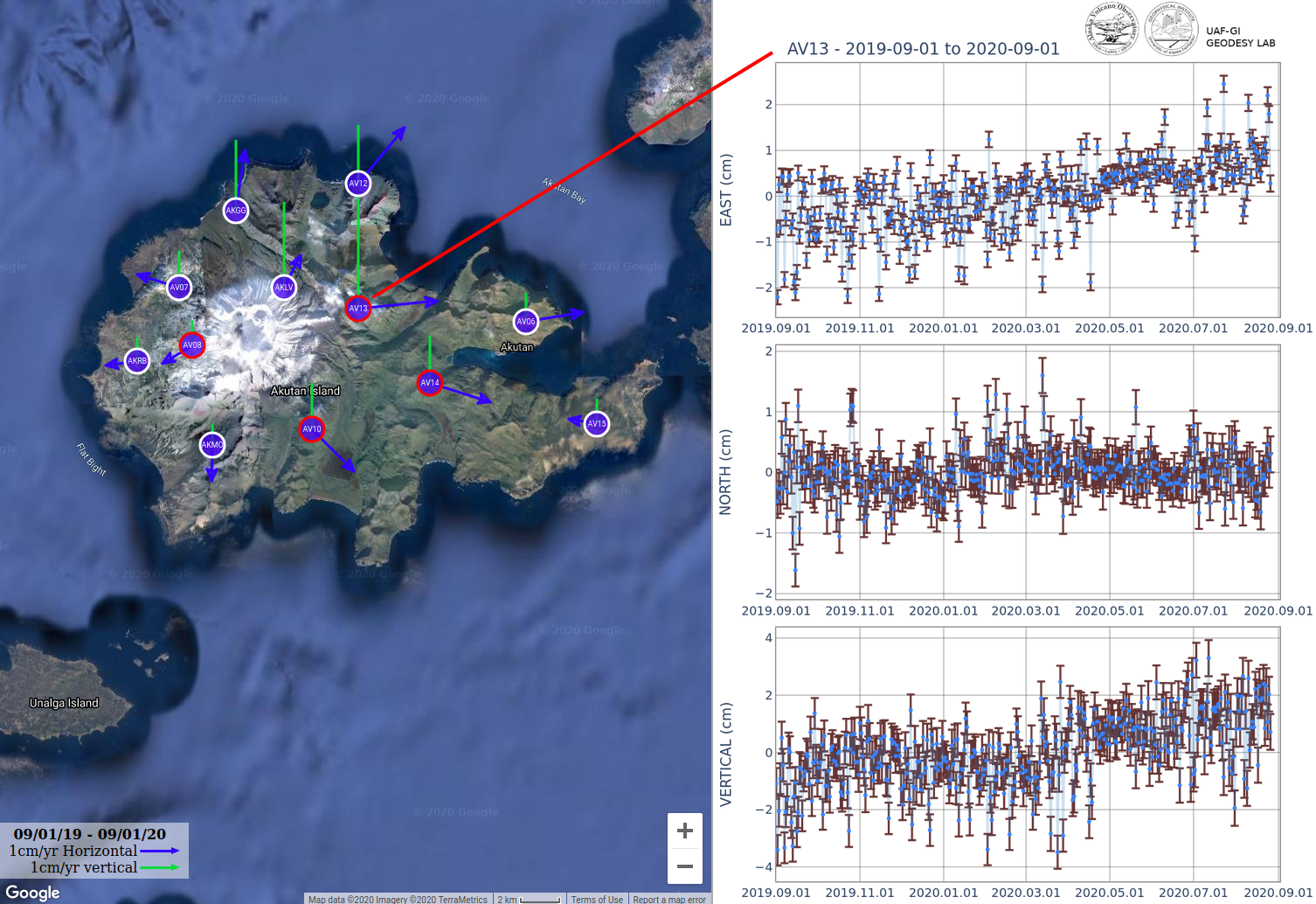Show Sites:
Hold shift while clicking to graph multiple stations
Vector Scale:
1cm/yr Horizontal
1cm/yr vertical
1cm/yr vertical
GNSS:
GNSS+borehole tilt:
GNSS+borehole tilt:



